Fitting Swift Boxes to our House
For a couple of years now Jo and I have been thinking about making and fitting swift boxes to our house. We have breeding swifts in our village and felt that boxes may be successful. Unfortunately our house isn’t suited to swallows. In addition, it has smooth render, so despite our false boxes we can’t seem to encourage house martins either. So maybe it will be third time lucky with swifts!
“The swift is a medium-sized aerial bird, which is a superb flier. It evens sleeps on the wing! A plain sooty brown but in flight against the sky it appears black. The bird has long, scythe-like wings and a short, forked tail. It’s a summer visitor, breeding across the UK, but most numerously in the south and east and wintering in Africa.” RSPB
“But….swifts are in trouble. The UK has seen numbers plummeting, with a 53% decline between 1995 and 2016.” RSPB
RSPB Love Nature Campaign
So spurred on by the RSPB Love Nature campaign to have 1000 extra swift boxes up before the birds arrive back from Africa this month I took to researching how to make them. Well you know me you will already know that I didn’t want to buy the boxes, I wanted to make my own instead. Indeed, I enjoy a bit of woodwork, I’ve made 100+ bird boxes, so a few swift boxes shouldn’t be difficult…….or so I thought!! Immediately I came upon the Bristol Swift Project and their fantastically informative website full of information on box designs. Including things which have worked and things which haven’t.
I had to choose from a standard style that you fit underneath your eaves or a side of the house design. Alternatively we could try or a row of boxes so three boxes in one, a terrace!
I decided on the standard, under the eaves type, so armed with their plans I was off!
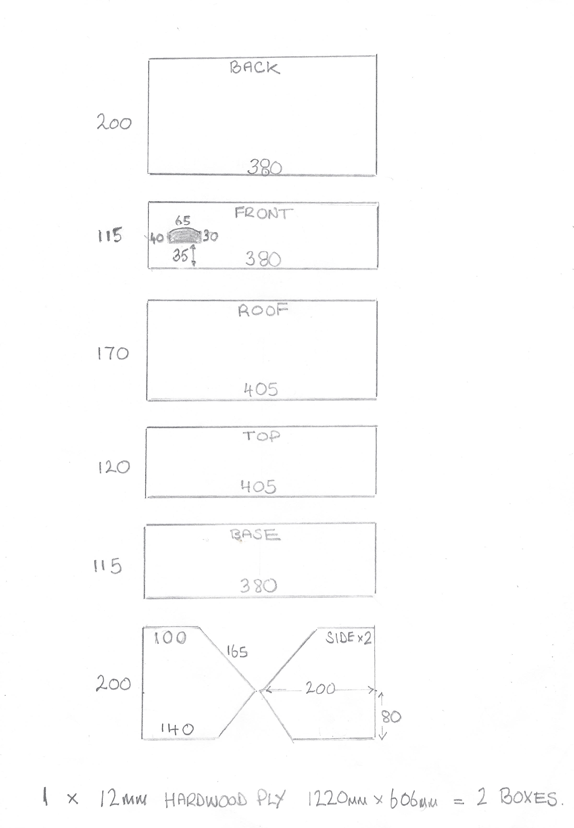
Ordering the wood
I ordered a couple of sheets of 18 mm plywood from a local builders merchant. The wood arrived a few days later. Unfortunately there were some awful knocks where the skin layer of plywood had been damaged. So they came and took it back! Good job really, the wood I ordered was too thick as it should have been 12 mm …….that part was my fault.
Fortunately we have a friend within the village who offered to fetch a couple of 8′ x 4′ sheets of plywood from a local store, this time 12 mm!
When I finally studied the design and marked out one of the sheets of plywood, I thought things were a bit odd. It turned out I had misread the main sheet size and now had far too much plywood!
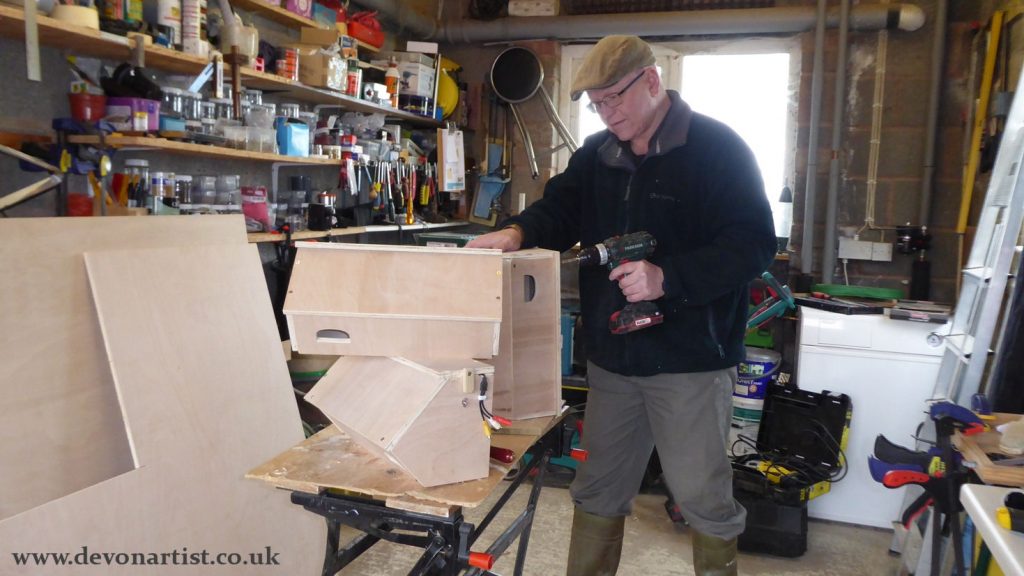
Construction begins
Oh well never mind, I got cutting the sections I needed, and decided to make four boxes, just so we have a couple spare.
With all pieces cut for four boxes there was ample plywood left over to make a barn owl box. I assembled each one by pre-drilling, countersinking and sanding.
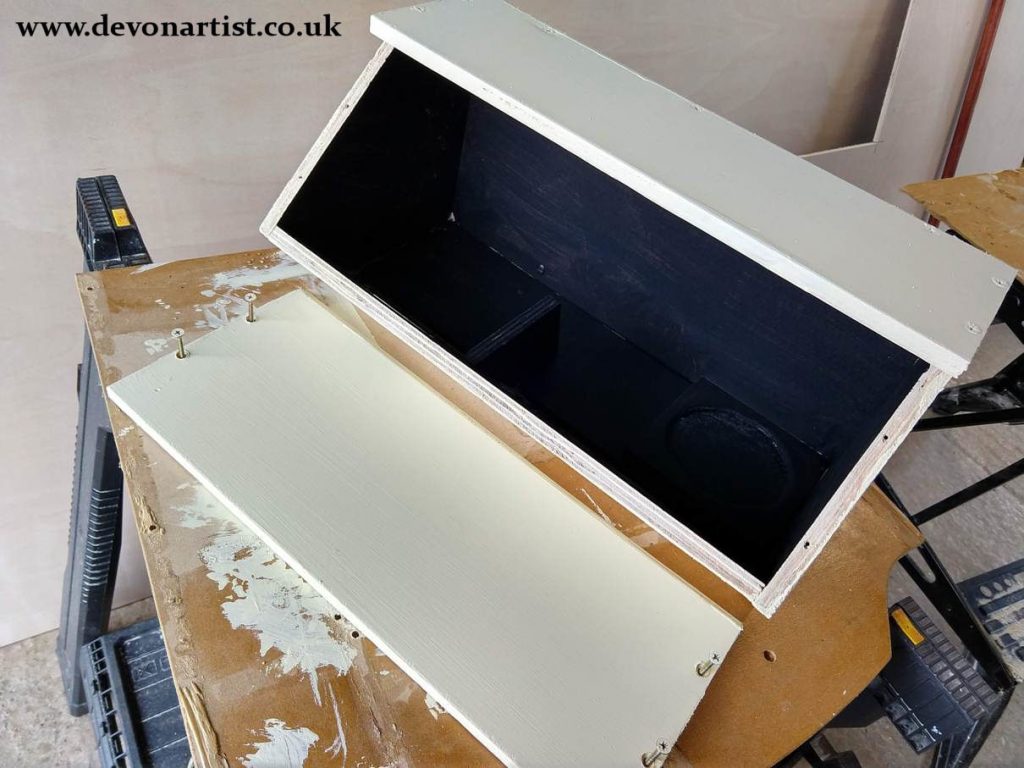
The hole was made as a ‘D’ shape to a rough size of 30 mm. The ‘D’ shape is an idea that the Bristol Swift Project came up with, again through their many years of extensive research. Their vast amount of knowledge has indeed really helped us with making and fitting swift boxes to our house.

I cut a small square block of 18 mm wood, routered out the inside to create a little bowl. This was now all ready for any eggs and would help prevent them rolling away. Swifts don’t make a nest as such.
I decided to add a partition inside, the Bristol Swift research, suggests that swifts prefer to go around something to get to their nest.
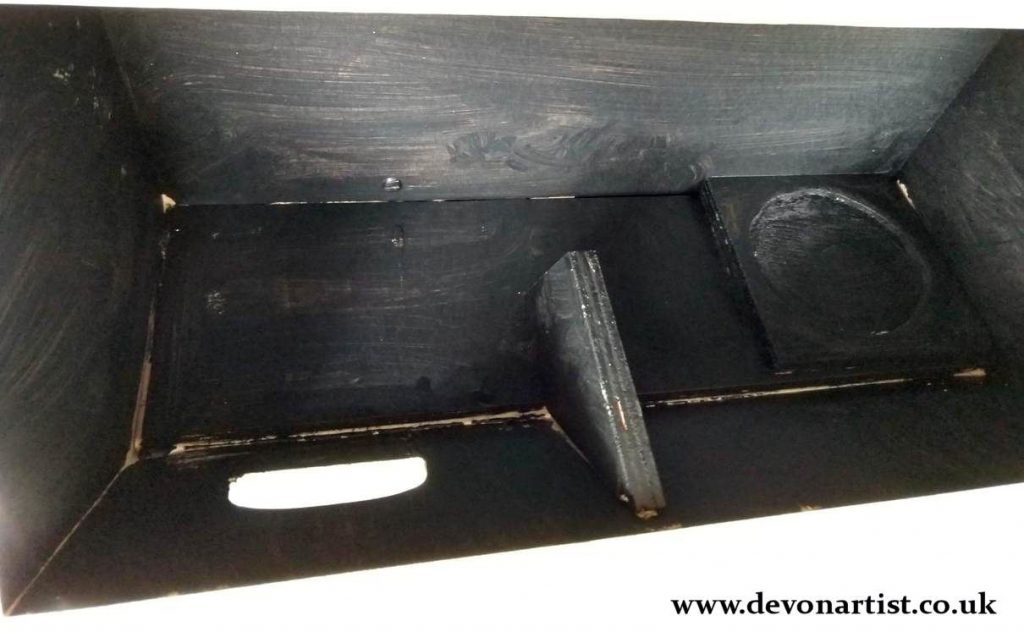
Fitting the camera
The next stage was to alter one of the sides to create a drop-down door where I can fix a camera. This would be ready for spotting any birds (we can but hope). All I need to do is attach a cable to the camera when and if we see swift activity.
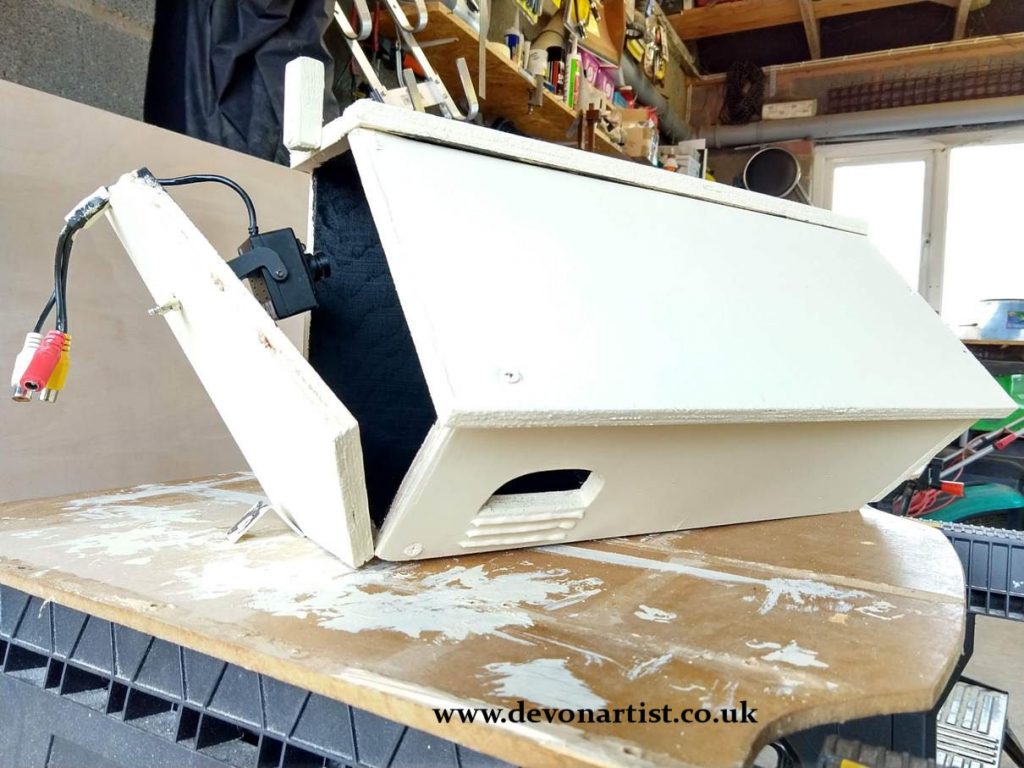
Finally, I just had to paint them all. The outside is a cream colour the same as our exterior walls. The inside a matt black (thank you to Danny for the paint and collecting the wood). Again, the experience of the Bristol Swifters suggests darkened boxes are preferred.
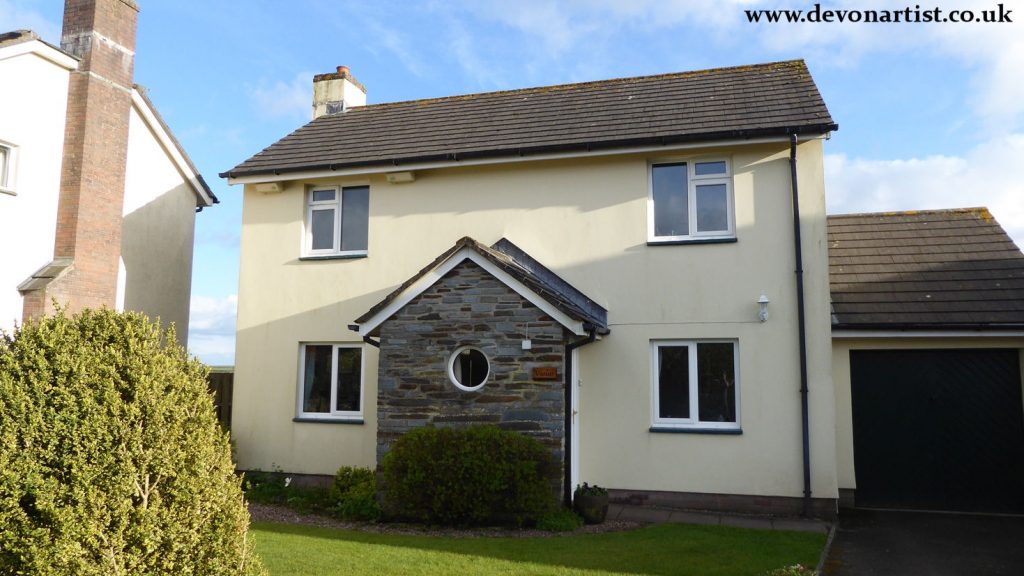
The last thing was to get the double extension ladder out and fix two of the boxes either side of a bedroom window. There, we have successfully finished making and fitting swift boxes to our house. 🤓
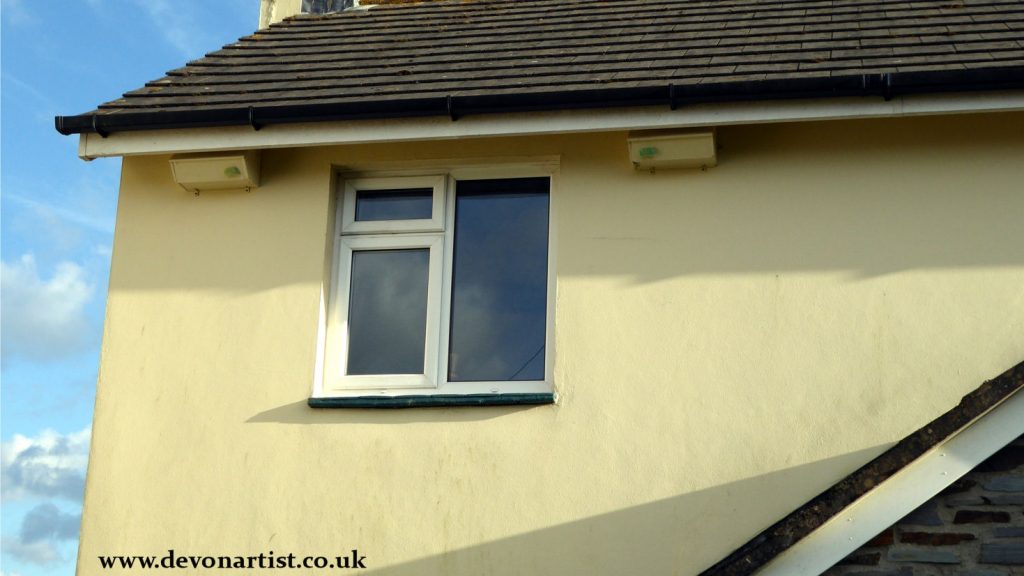
I know…. we will get the noise but we are more than happy with that if it helps the population of swifts.
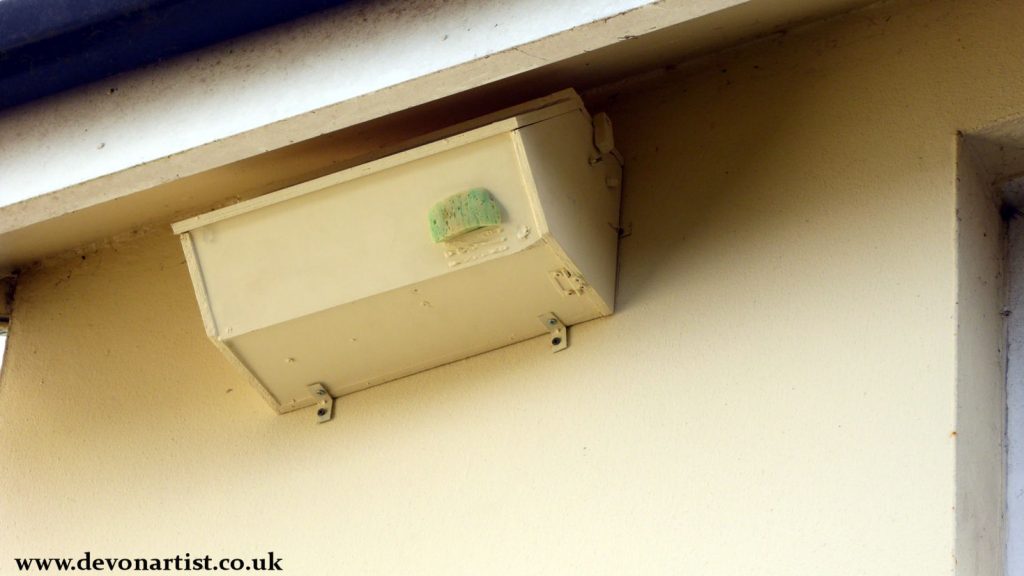
Finally, I bunged some sponge in the doorways. We don’t want our mass of house sparrows making a home in these boxes…..they will, you know!! (We’ve got many other sparrow boxes around the house for them to nest in.) Now we sit back and wait. I’ll be sure to let you know if we get swifts in our boxes – keep your fingers crossed for us. 
What about you, any plans for making and fitting swift boxes to your house?
UPDATED JUNE 2021
We are thrilled that this summer we have successfully attracted Swifts to our boxes. We have seen them using both boxes, but only one now seems to be active, as the other is being used by Sparrows! We hope that the pair will see our box as their home and return to it for many years to come.
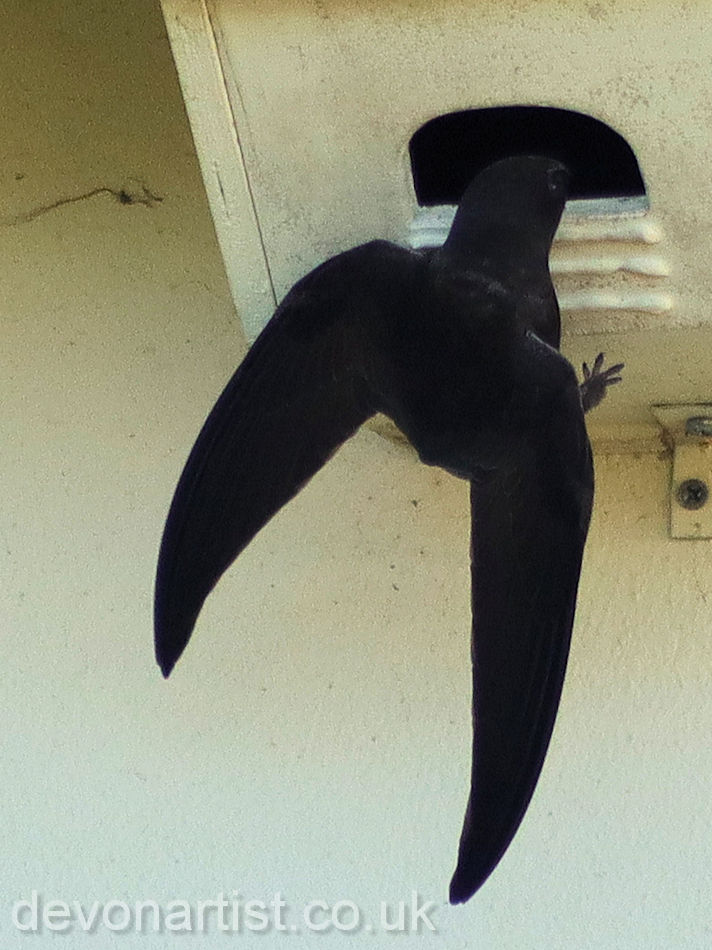
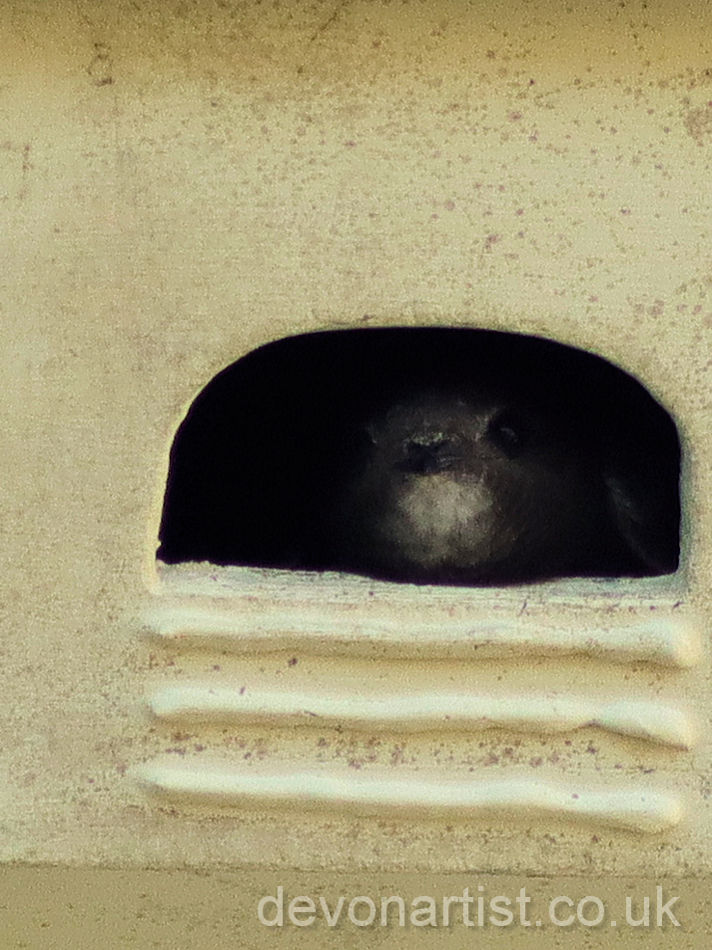



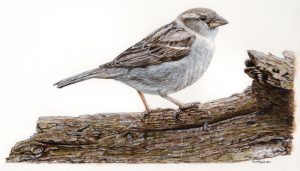




10 Responses
Good luck, Paul. Let us know if you get any nesting swifts
We will certainly, thank you Nina. 🙂
Great article!! Going to try to send it to my husband so he can read it…I think after looking it up on the internet my understanding is that we have quite a lot of these birds all along the Eastern Seaboard of the United States…don’t know if I ever noticed them before or if I knew what they were if they were around…Do you worry about them getting into your chimney at all…sounds like they might if spooked for any reason because it would be an enclosed area and that is where they like to hide…I would love to hear how this works out for you…
Hi Susan, thank you very much. Yes it would be great if we get swifts nesting in the boxes I made, it won’t be long until they arrive with their duty free! We have quite small chimney pots on the house so we shouldn’t have that problem. 🙂
Hi Paul
I’ve just embarked on building swift boxes for our village in North Essex.
I’m using the Zeist/model 30 design but like you, I like the D shape hole of the Bristol website.
But could you let me know what you have used to paint the inside of the box black?
And how have you built up the landing strips below the hole? Is it with wood filler?
Thanks
Mark
Hi Mark, thank you for posting and what brilliant news to hear you are making Swift boxes for your village. Out of the four boxes I’ve made for our house, three out of four are painted matt black inside. I did have all four painting black internally, but this year decided to try one that is white inside. Last year we have a pair for the second year running in the same box of which we have a camera installed. Because the mat black paint makes even an infrared image a little dark, we decided that I would paint it white to allow more light reflection from the matt white walls, and to see if the Swifts still like it. It’s a trial for this year but the results will be interesting.
As for the landing strip below the D shaped entrance hole, I simply used caulking, or gripfill squeezed on will do as well.
Have fun making them and putting them on the wall. I used four 1” metal angle brackets for this.
Paul
I think a more valuable answer would have indicated the type of paint you’ve used.
I’m about to assemble our first box to substitute for a vent into our attic, now blocked off, where swallows nested in last year, raising a clutch of two healthy offspring. I will paint the interior sides of the plywood before final assembly. I’m assuming that a water based paint or stain will be better than any oil or acrylic paint.
Hi, thank you for your comment. I used a waterbased matt black paint, so nothing too toxic for the birds. There are mixed opinions regarding the colour inside the box, some say leave it as the natural wood, paint it matt white or as well know matt black. I’ve now painted one of my four swift boxes white inside, just using a couple of coats of emulsion paint, just for a test to be honest with you and see how it goes this year. The rest of my boxes are obviously black inside. Paul
Mark,
I am just building some for Halstead.
Rupesh
That’s brilliant to hear, you will need to get them up very soon as Swift’s have been spotted here in the UK.